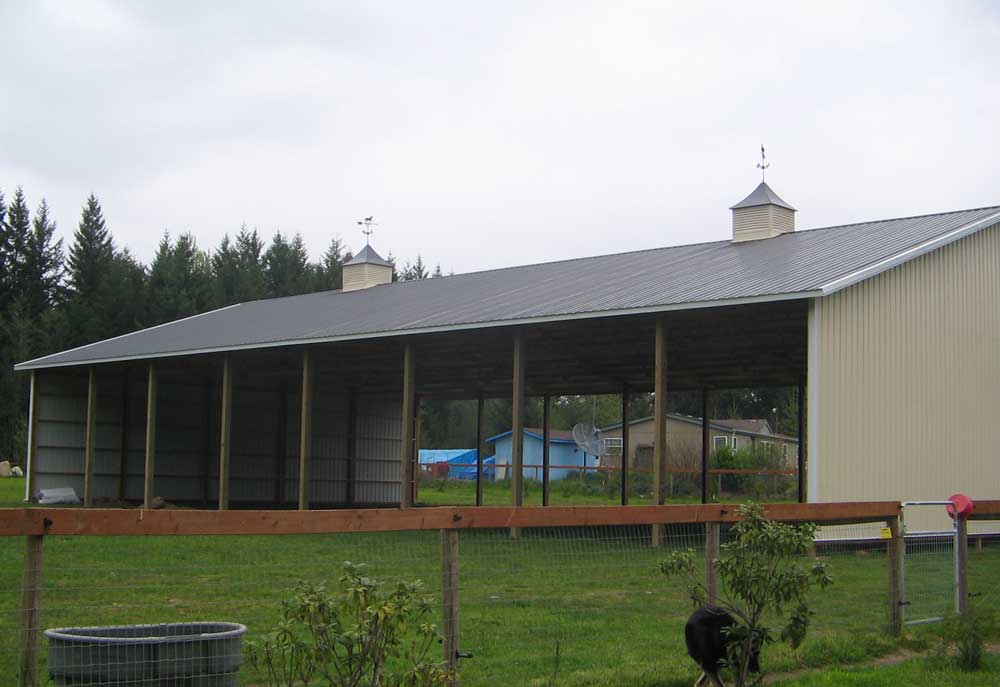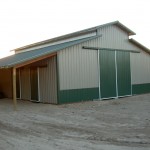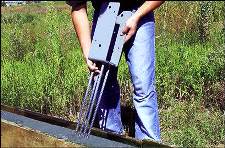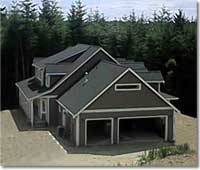Manure Storage Pole Barns
Here is a combination which seems doomed from the get go: young man, girl 60 miles away from said young man’s home, late night darkness, a crotch rocket, slow speed zones, Idaho Highway patrol and unfamiliar roads.
After our youngest son had surgery to repair his broken hip, Dad had very few words of wisdom. Basically it came down to, “Life is going to hand you some pooh, you can either paint with it or wallow in, it is up to you”. Brent has seen the light at the bottom of the manure pile and is deep into his master’s degree in kinesiology at the home of the Naismith Memorial Basketball Hall of Fame at Springfield College, Massachusetts.
Manure is not limited to the lives of young men, farms with livestock have to deal with it as well. As Brent’s older sister (the oft mentioned in my articles horse trainer Bailey) can attest, a single horse can produce 50 pounds of manure per day which translates to 11 cubic yards (a dump truck load) and nine tons annually! The manure and bedding produced by this horse in a year can exceed 25 cubic yards. This would require a storage area about 12 feet square and three to five feet deep for a year of storage.
Often a manure storage pole barn becomes the best overall design solution. When planning for the building, many factors should be taken into consideration.
Divert any surface water away from the building site (which should be on either naturally high ground, or a built up site). Although it may seem obvious, construct the manure storage pole building so the floor is above flood level. When finished, the site itself should have a slight slope for drainage towards the loading end.
Not only should the manure storage building have overhangs, it should have continuous gutters and downspouts which direct rooftop water away from the building.
Place the building where it is easily accessible to load and unload. Make sure it is accessible in all weather conditions.
Manage the smell – consider the direction of prevailing winds as related to dwellings. While your manure might smell to you like money, not everyone might agree.
Aesthetics – in most instances you will want your neighbors and passers-by to be your friends. Rows of evergreens and/or shrubs can block the view and reduce odor.
Size the manure storage pole barn appropriately for the amount produced. Consider if more animals might be added at a later date. It is ultimately less expensive to construct larger than initially needed, rather than having to add on at a later date. Plan on storage for at least three and up to six months.
 Whilst a roof only structure might seem to be the least expensive, in most cases the ideal design solution is to have the rear endwall enclosed to the ground and the front endwall clear span, so as to avoid hitting columns when loading and unloading.
Whilst a roof only structure might seem to be the least expensive, in most cases the ideal design solution is to have the rear endwall enclosed to the ground and the front endwall clear span, so as to avoid hitting columns when loading and unloading.
A poured concrete floor is ideal, slightly sloped from back to front with any drainage being headed to an adjacent vegetative filler strip. The least expensive walls are concrete ecology blocks (https://www.hansenpolebuildings.com/2015/04/ecology-blocks/) stacked typically two high just on the inside of the rear endwall and eave sidewall columns.
For all of your manure challenges, a post frame building is likely a part of the best and most practical solution.









